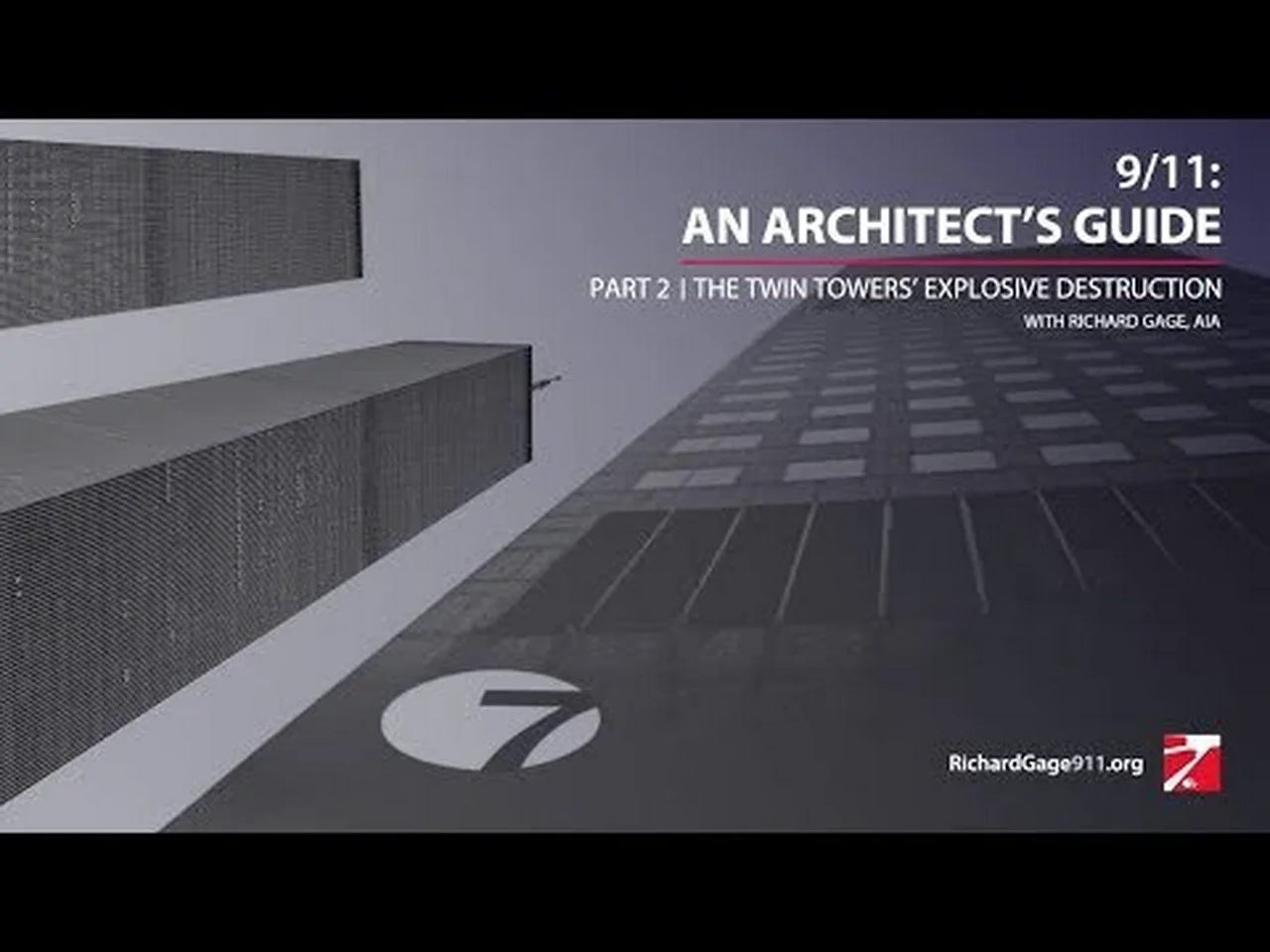9/11: An Architect's Guide Part 2, TT Explosions (5/11/22 webinar) [go to RichardGage911Again]
[[[Please subscribe to our NEW YouTube channel, "RichardGage911Again":
https://www.youtube.com/user/richardgageYouTube's censorship has given me two strikes already on this channel.]]]
9/11: An Architect’s Guide | Part 2: The Twin Towers’ Explosive Destruction
Course Number: RG911-AAG-OD2
Three-part webinar series. Each part is about 1 1/2 hours.
We are an organization dedicated to conducting research and providing education about the complete destruction of the three World Trade Center skyscrapers, our courses give architects the technical knowledge and analytical framework with which to evaluate the most likely cause of those building failures.
Course Description:
Never before has a steel-framed high-rise collapsed from fire. Why, then, did three such buildings collapse on September 11, 2001?
In Part 2 of “9/11: An Architect’s Guide,” Richard Gage, AIA, provides an overview of the most important evidence related to the explosiveness of the Twin Towers’ destruction. Much like that of WTC 7, the destruction of the Twin Towers exhibited most of the features of controlled demolition.
In 2005, the National Institute of Standards and Technology (NIST) concluded tha[[[Please subscribe to our NEW YouTube channel, "RichardGage911Again":
https://www.youtube.com/user/richardgageYouTube's censorship has given me two strikes already on this channel.]]]
9/11: An Architect’s Guide | Part 2: The Twin Towers’ Explosive Destruction
Course Number: RG911-AAG-OD2
Three-part webinar series. Each part is about 1 1/2 hours.
We are an organization dedicated to conducting research and providing education about the complete destruction of the three World Trade Center skyscrapers, our courses give architects the technical knowledge and analytical framework with which to evaluate the most likely cause of those building failures.
Course Description:
Never before has a steel-framed high-rise collapsed from fire. Why, then, did three such buildings collapse on September 11, 2001?
In Part 2 of “9/11: An Architect’s Guide,” Richard Gage, AIA, provides an overview of the most important evidence related to the explosiveness of the Twin Towers’ destruction. Much like that of WTC 7, the destruction of the Twin Towers exhibited most of the features of controlled demolition.
In 2005, the National Institute of Standards and Technology (NIST) concluded that the Twin Towers’ destruction resulted from the combined effects of the airplane impact damage and ensuing fires.
Is NIST’s explanation for these unprecedented structural failures valid? Decide for yourself after watching this informative one-hour presentation. Using the information presented, you will be able to evaluate which of the two hypotheses — fire-induced failure or controlled demolition �� is more consistent with the evidence.
Learning Objectives:
Participants will be able to:
1. Describe the characteristics of building fires and the aspects of high-rise design that contribute to make fire-induced failure in steel-framed high-rise buildings a rare occurrence.
2. Recognize the distinct features associated with fire-induced failure and the distinct features associated with the procedure of controlled demolition.
3. Describe step-by-step the series of structural failures that the National Institute of Standards and Technology found to be the most likely cause of the collapse of World Trade Center Twin Towers.
4. Analyze the physical evidence and the dynamics of the collapse of the Twin Towers accordt the Twin Towers’ destruction resulted from the combined effects of the airplane impact damage and ensuing fires.
Is NIST’s explanation for these unprecedented structural failures valid? Decide for yourself after watching this informative one-hour presentation. Using the information presented, you will be able to evaluate which of the two hypotheses — fire-induced failure or controlled demolition �� is more consistent with the evidence.
Learning Objectives:
Participants will be able to:
1. Describe the characteristics of building fires and the aspects of high-rise design that contribute to make fire-induced failure in steel-framed high-rise buildings a rare occurrence.
2. Recognize the distinct features associated with fire-induced failure and the distinct features associated with the procedure of controlled demolition.
3. Describe step-by-step the series of structural failures that the National Institute of Standards and Technology found to be the most likely cause of the collapse of World Trade Center Twin Towers.
4. Analyze the physical evidence and the dynamics of the collapse of the Twin Towers according to how consistent it is with the competing hypotheses of fire-induced failure and controlled demolition.
Learn more:
https://RichardGage911.org#RichardGage911 #NIST911 #AnArchetectsguidepart2 #TTExplosivedestruction #richardgage911 #richardgage911:unleashed! #wtc7 #911con #worldtradecenter #richardgage
